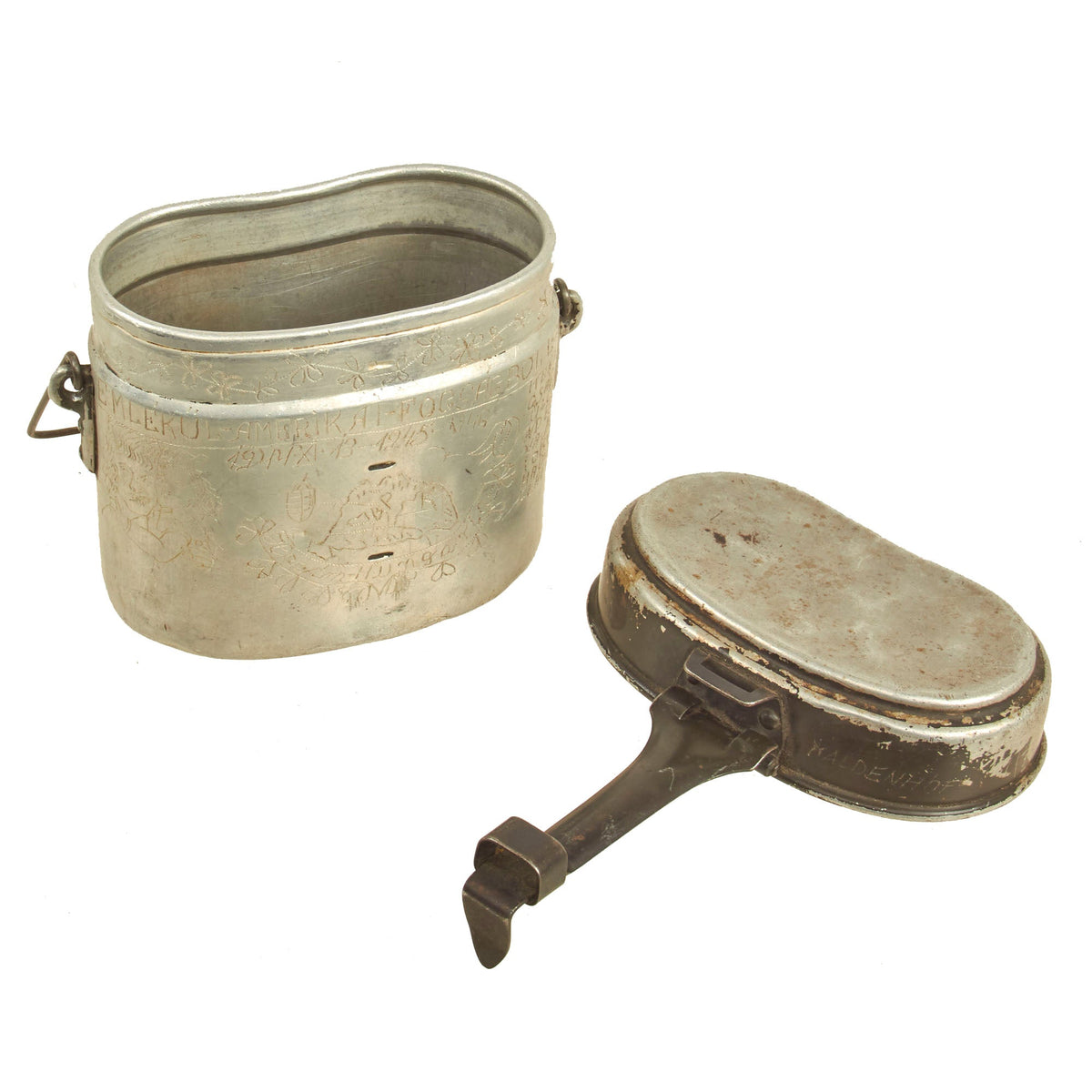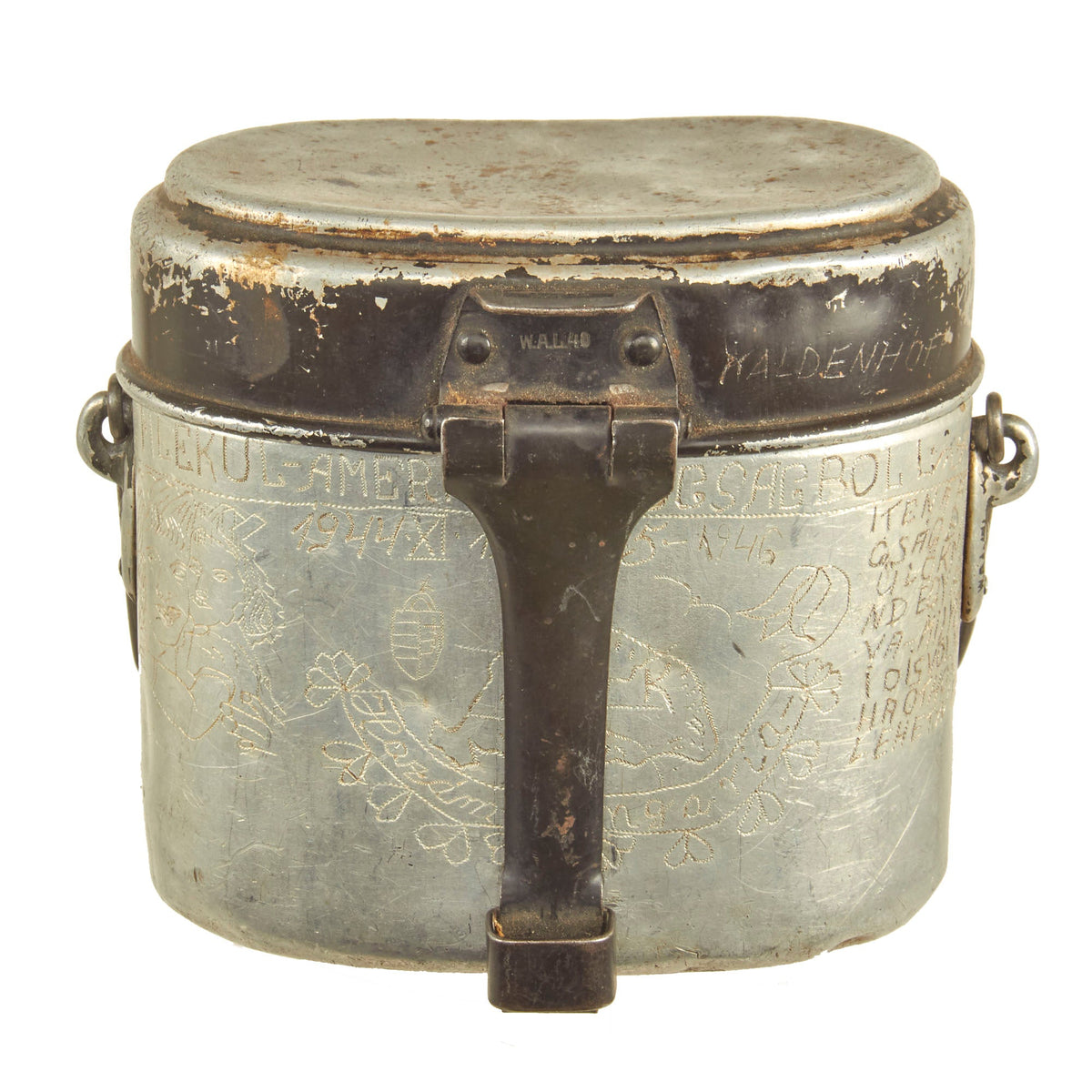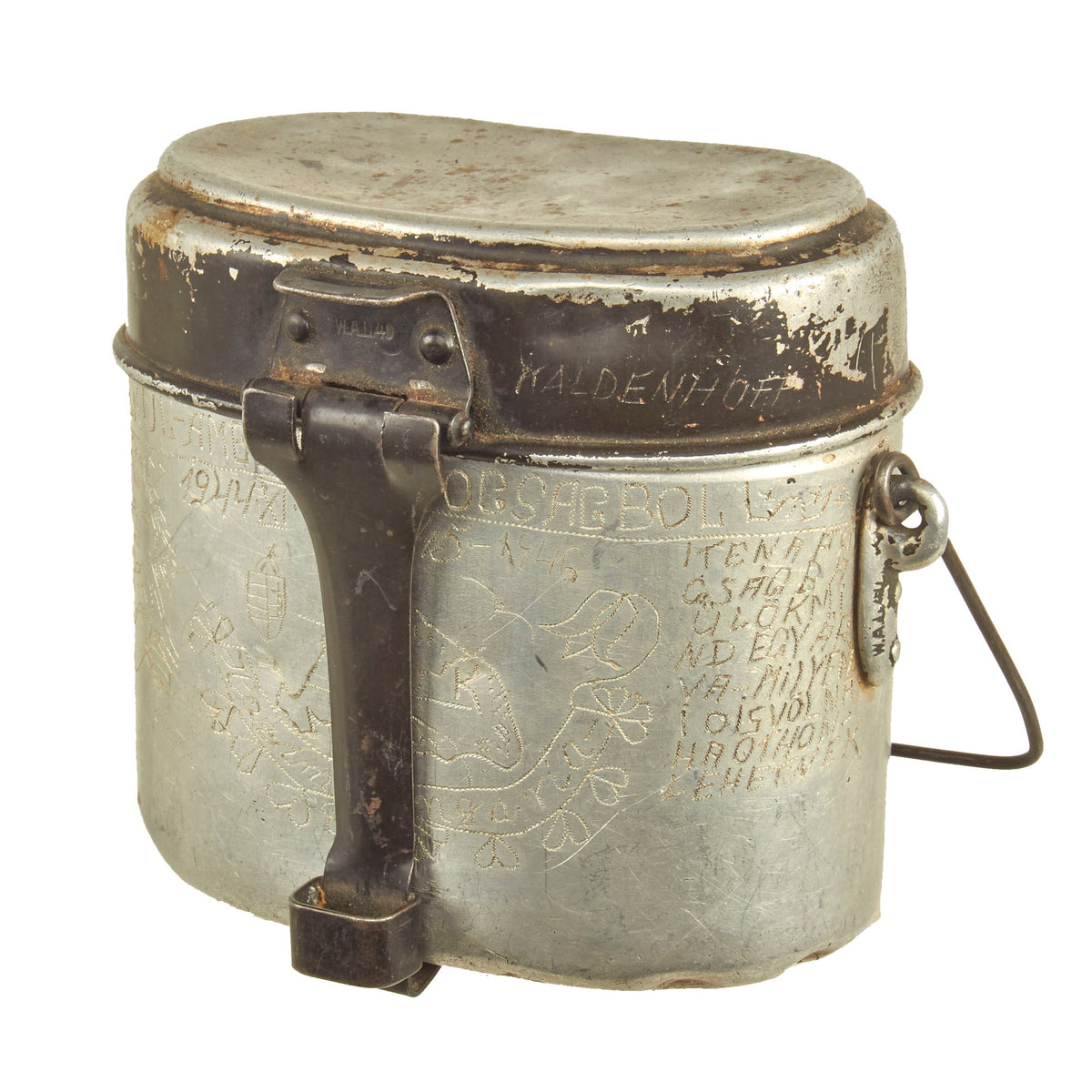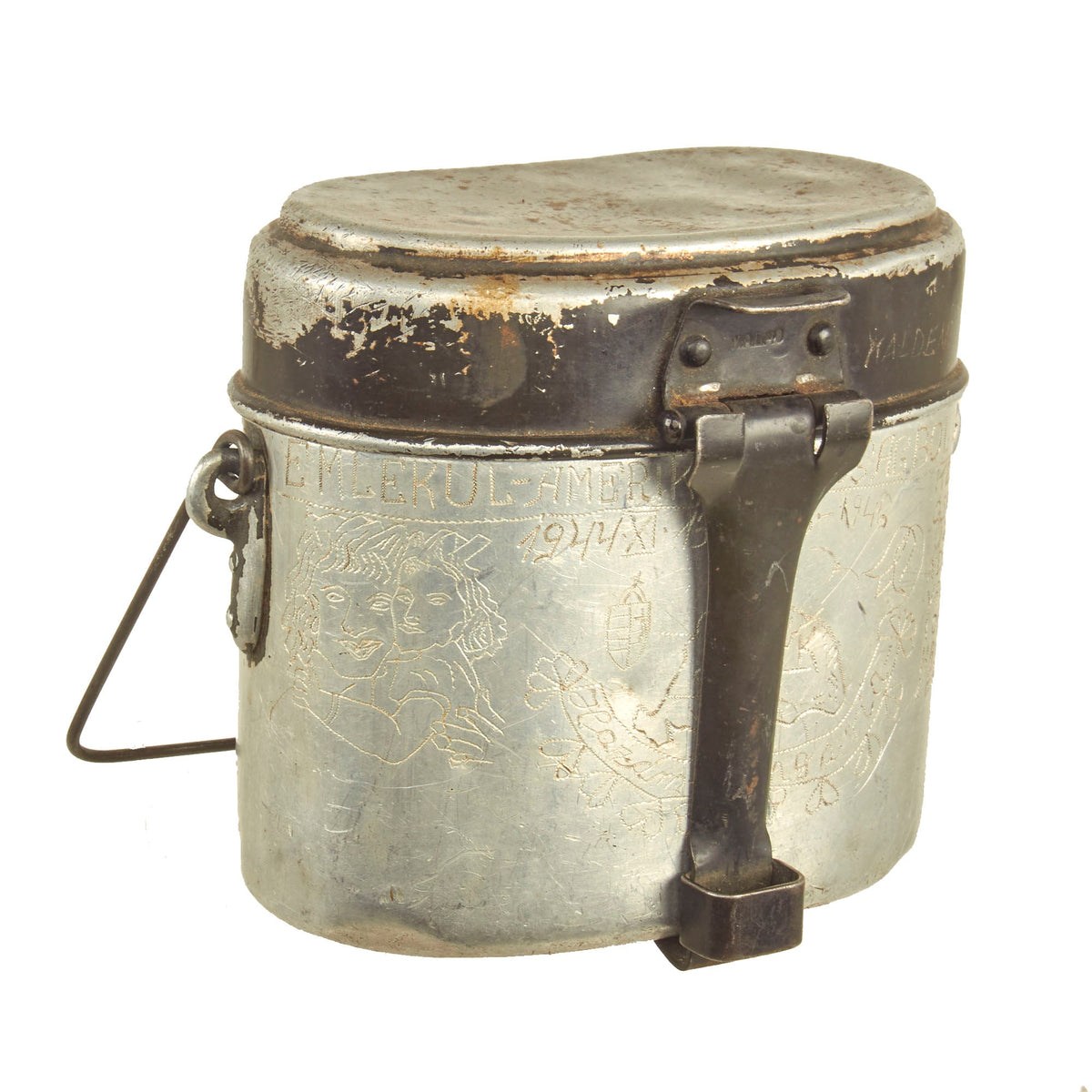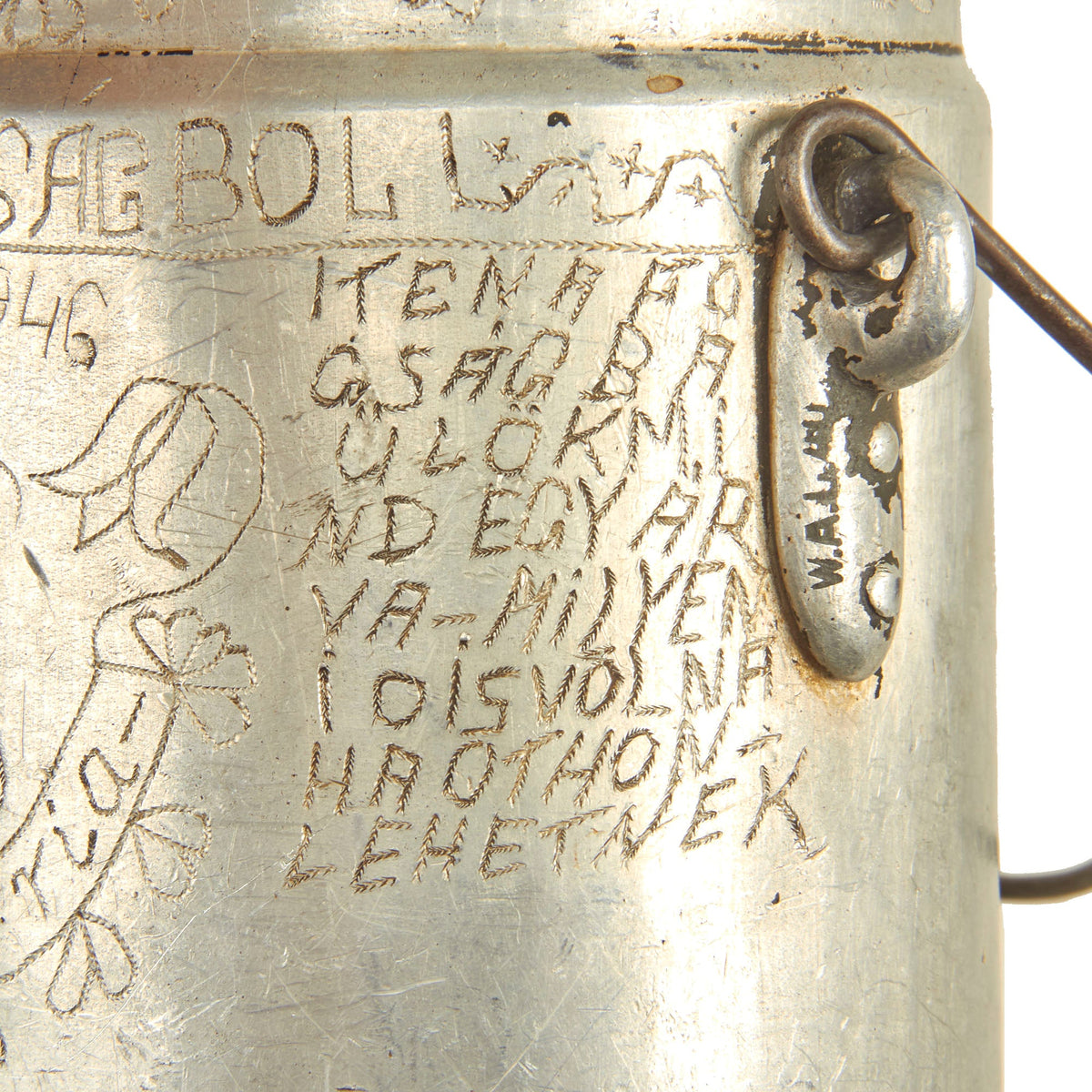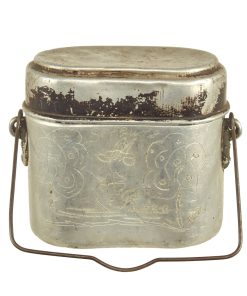Original German WWII Hungarian Issued M31 Mess Kit Kochgeschirr Modell 1931 With Prisoner of War Artwork – Dated 1940 Original Items
$ 395,00 $ 118,50
Original Item: Only One Available. The M31 mess kit was officially introduced on March 23, 1931 and was based on the WWI M1910 mess kit but was a slightly smaller version with a reduced capacity of roughly one and a half liters. The M31 mess kit was constructed in two parts with a small removable shallow top lid which could serve as a plate or a frying pan with a larger, deep bottom compartment that could be used more as a bowl or pot.
Originally the M31 mess kits were manufactured in aluminum but later as the aluminum was required for other more critically essential items, the mess kits began to be manufactured in steel although aluminum mess kits continued to be manufactured and utilized. Regulations prescribed the assorted manners in which the mess kit was to be carried with the most common form being to secure it to the bread bag suspended from the load carrying waist belt although other methods were also utilized. When issued the mess kit came accompanied with a leather strap designed to secure it to the individual though it is no longer present with this example. Following the old adage that, an army runs on its stomach, the M31 mess kit must be considered one of the most important of all personal equipment items.
Regulations authorized each combat soldier a daily food ration which was most commonly prepared in the field by a unit’s mobile field mess and distributed to the front line troops but this wasn’t always possible in combat situations. As a result, front line combat soldiers were to be supplied with assorted canned rations and some bread to be carried individually in the event that food from the field kitchen couldn’t reach their positions. Although regulations dictated the daily quantity of rations issued to each soldier it became more and more difficult to meet the requirements as the war continued and any food became a valuable commodity.
This example of an M31 Mess Kit was issued to a Hungarian soldier, as identified with the writing and artwork etched into the aluminum. The top lip of the lower basin portion, it is marked in Hungarian which loosely translates to being a remembrance item for the years spent as being an American Prisoner of War. There are years beneath this top inscription which we believe to be the years in which this soldier was held captive; 1944, 1945 and 1946. There are various other examples of artwork, the main focal point being what may have been the soldier’s wife and daughter.
The hinged bracket on the top lid for the handle is stamped with W.A.L. 40 indicating 1940 manufacture by Westfalische Aluminium Industrie, Junger & Co. of Lüdenscheid. This marking is also found on the brackets for the handle that is attached to the main basin of the messkit itself. The overall condition is quite nice with the only paint being retained a little on the lid. It would appear that this soldier stripped the paint the best he could in order to make the artwork “pop” more.
A great example that comes more than ready for further research and display.
Fast Shipping with Professional Packaging
Thanks to our longstanding association with UPS FedEx DHL, and other major international carriers, we are able to provide a range of shipping options. Our warehouse staff is expertly trained and will wrap your products according to our exact and precise specifications. Prior to shipping, your goods will be thoroughly examined and securely secured. We ship to thousands clients each day across multiple countries. This shows how we're dedicated to be the largest retailer on the internet. Warehouses and distribution centres can be located throughout Europe as well as the USA.
Note: Orders with more than one item will be assigned a processing date depending on the item.
Before shipping before shipping, we'll conduct a thorough inspection of the items you have ordered. Today, the majority of orders will be delivered within 48 hours. The delivery time will be between 3-7 days.
Returns
The stock is dynamic and we cannot completely manage it because multiple stakeholders are involved, including our factory and warehouse. So the actual stock may alter at any time. It's possible that you may not receive your order once the order has been made.
Our policy is valid for a period of 30 days. If you don't receive the product within 30 days, we are not able to issue a refund or an exchange.
You can only return an item if it is unused and in the same state as the day you received it. You must have the item in its original packaging.
Related products
Uncategorized
Angolan Rebel 1970s era 60mm Inert Display Mortar from Angolan Civil War Original Items
Uncategorized
Uncategorized
Uncategorized
Uncategorized
Uncategorized
Uncategorized
Uncategorized
Uncategorized
Uncategorized
Armoured Fighting Vehicles of the World: AFVs of World War One (Hardcover Book) New Made Items
Uncategorized
Armored Burgonet Helmet & Polearm from Scottish Castle Leith Hall Circa 1700 Original Items
Uncategorized
Uncategorized
Uncategorized
Uncategorized
Uncategorized
Uncategorized
Uncategorized

